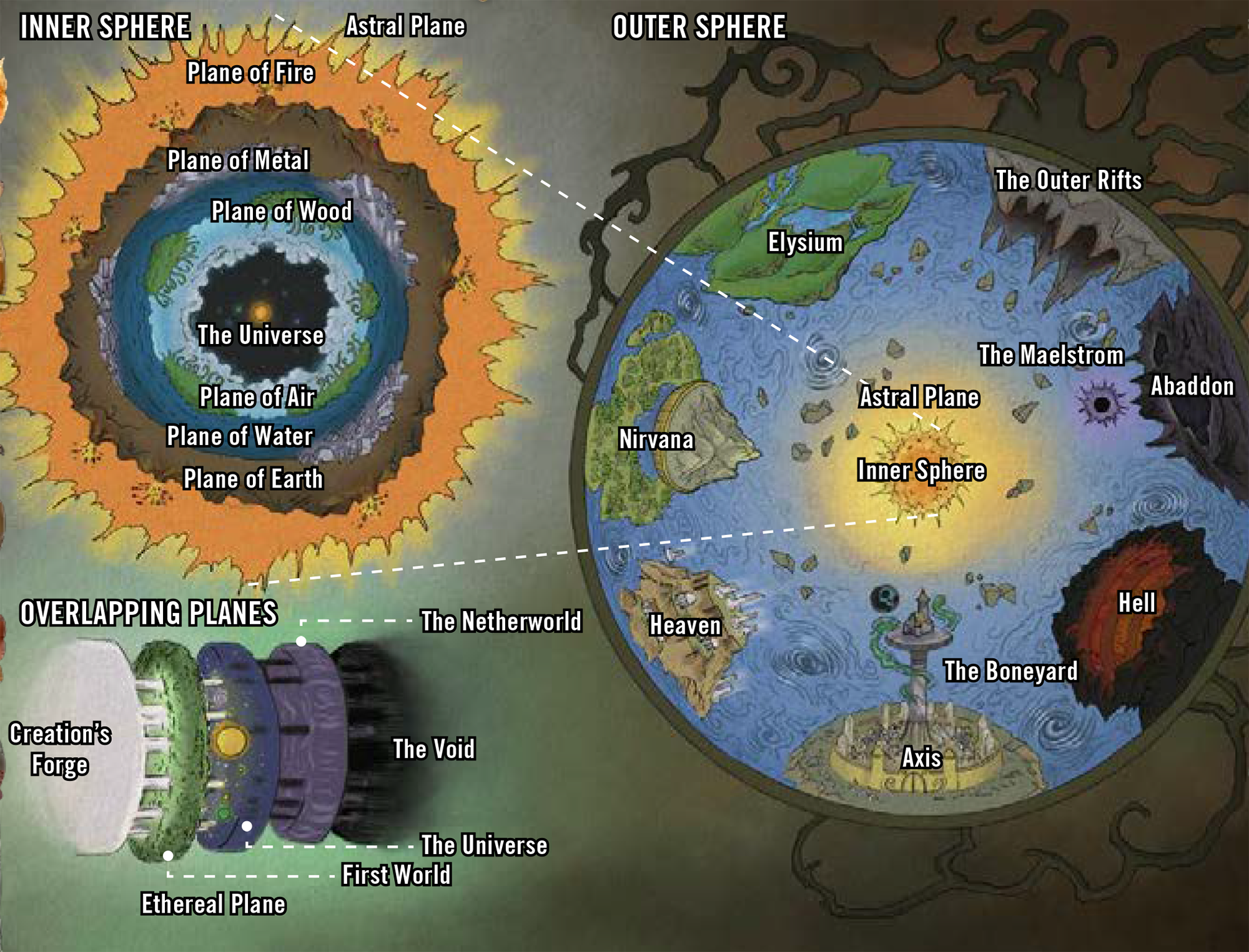
Illustration by Wayne Reynolds
Close your eyes and imagine a magician drawing upon ancient forces and casting a spell, bringing magic into the world. What spell do they cast? When you think of magic, what do you see? Conjured torrents, exploding fireballs, pillars of stone—these spells, by my estimation, are precisely the sort that never stray far from our minds. The elements are quite inseparable from magic and, indeed, from all life. Our reality could never exist without them; there would be no water in the creeks, no forests of trees, no sun shining in the sky if the elements had not been shaped into being at the dawn of creation.
For me, exploring the Elemental Planes shares much in common with exploring different parts of my personality. I am a jann, a genie of the Universe who embodies all the elements simultaneously. They infuse my form, shaping my mind and body, and I can find aspects of myself within all of them. When I visit the Plane of Fire, I rediscover my passion and warmth. When I sail across the Plane of Water, I chart the vastness of my own heart. So too it must be for mortals, I think, who I’ve always imagined possess a unique ability to look into any plane they fancy and find a facet of themselves reflected back, a sort of universal empathy.
If you journey across the Elemental Planes, I believe you too will discover much about yourself, as well.

Illustration by Matsya Das
Think of each element as a friend, each with their own unique strengths and peculiarities. Examples of each element’s character abound, easily observed across the Elemental Planes and in the power wielded by elementalist spellcasters. A brief primer on the six elements follows, but there is much more that can be learned, and many secrets waiting to be discovered.

Illustration by Matsya Das
Air: Adrift among the Elemental Cycle, air possesses a breezy aura of defiance. It’s frenetic and excitable, suited to creating sudden bursts of energy that leave nothing behind, though air magic can also be unpredictable. Like the elemental lord Hshurha, air is also invisible, and often used when an elementalist hopes their efforts can pass unnoticed.

Illustration by Matsya Das
Earth: Earth is methodical, reliable, and steadfast, but some criticize its slow pace and focus on contemplation over action. It is life-giving and nurturing, making it an excellent choice for protection magic or spells to support and empower what strengths a target already has.

Illustration by Matsya Das
Fire: Passionate but not always rageful, fire burns with intensity but quickly devours its fuel, left smoldering thereafter as it struggles not to go out. In addition to its destructive potential, fire is warm and joyful, and like the elemental lord Atreia, fire can be illuminating, revealing hidden intentions and banishing away frightful shadows.

Illustration by Matsya Das
Metal: Metal is a melancholic element. It carries a sense of finality with it, like a play whose sad ending is clear from the opening scene. Metal never destroys with speed or passion; instead, it brings gradual but ensured destruction, like a rusty hinge that eventually becomes stuck.

Illustration by Matsya Das
Water: As you’ve no doubt felt while sitting by a quiet pond, water can be soothing and peaceful, and is suited to magics that slowly bring stillness and calm. Of course, water can also channel the great ferocity of the tsunami and reshape terrain with rivers and waterfalls. It’s a fluid element, highly mutable and able to shift and change to take on the form of any vessel.

Illustration by Matsya Das
Wood: Purifying and always growing, wood is an element of spring storms and rising tempers. In the Elemental Cycle, wood feeds into fire, providing the fuel that stokes great infernos. Elemental wood is a bountiful source of energy, perpetually replenishing its reserves, and can burrow through any barrier with ease.
The book you hold presents my understanding of the elements and Elemental Planes, as much as it can be conveyed in writing. As I am well versed in the elements as a whole, but not each on its own merits, I have acquired texts from experts on the six individual elements, which you will find bound in this collection. I will return to describe the Churn of Elements at the end, the little-explored combinations of elemental magic and zones where the planes intersect.

Illustration by Ivan Koritarev
ABOUT THE AUTHOR
Aziza Amani al-Fasih was born in the Universe to a family of avid jann travelers. She delights in tours of the Inner Sphere and especially in sharing her favorite spots with the many new friends she meets along her journeys. Her best travel tip is to never be cheap with your luggage! A solid, waterproof trunk with flame-resistant runes is essential for enjoying any tour through the elemental planes.
Pathfinder Rage of Elements releases August 3rd at Gen Con, on paizo.com, and at your FLGS! Preorder yours today!